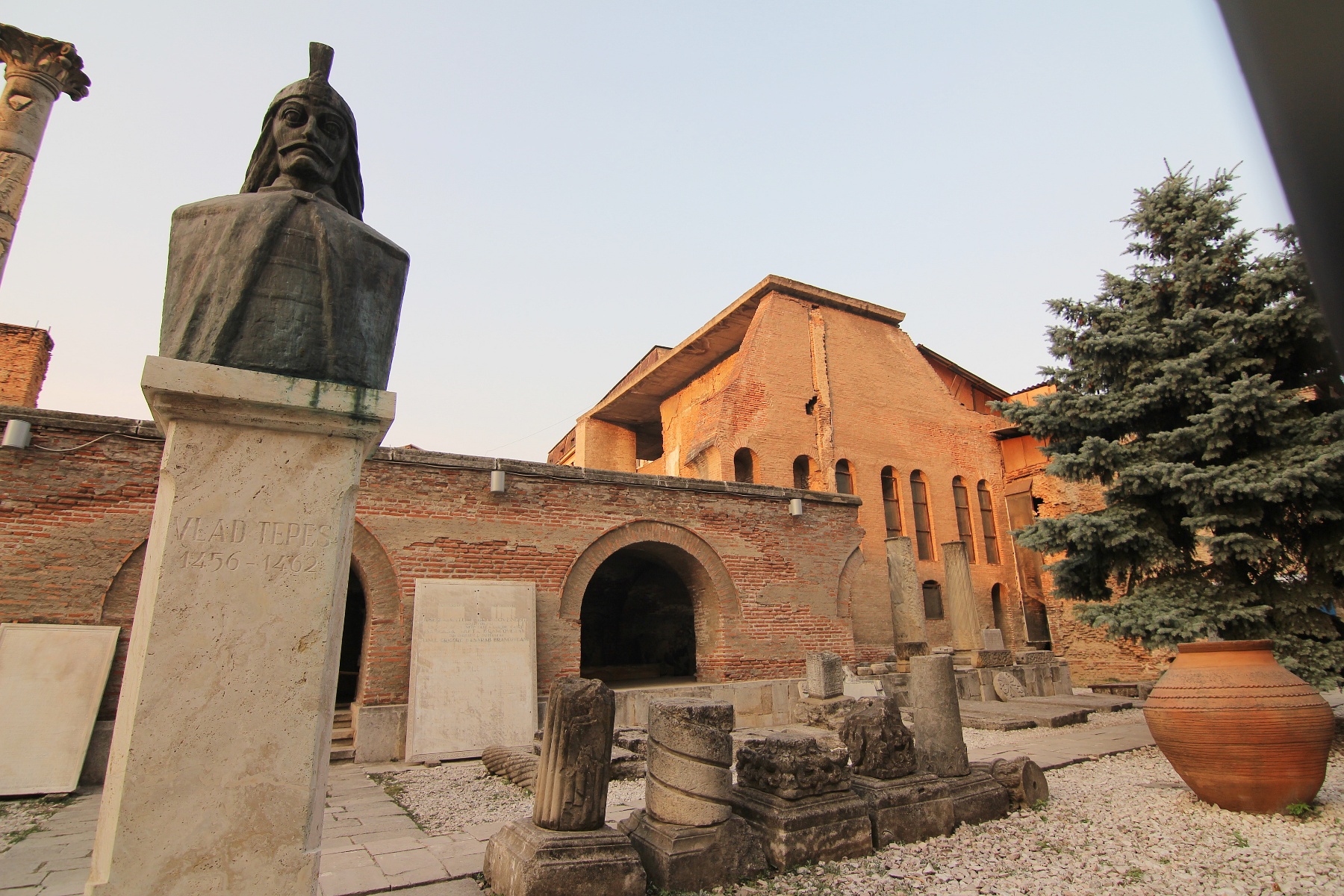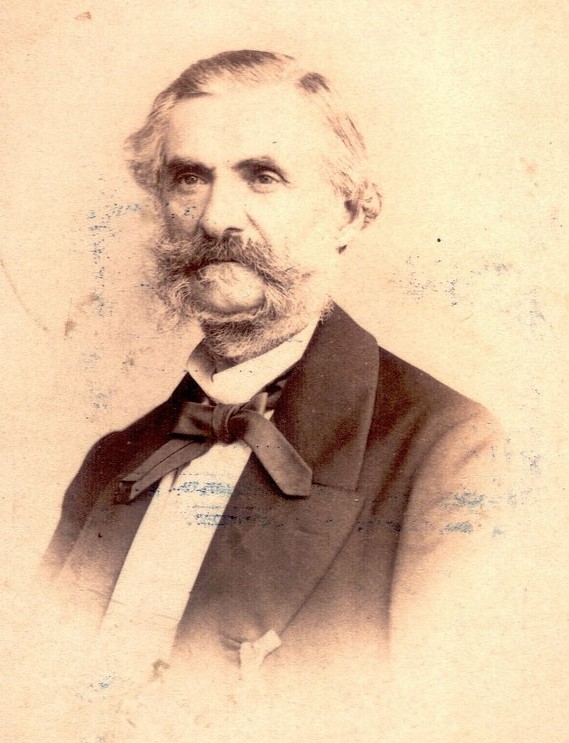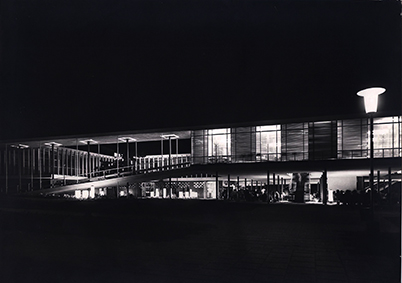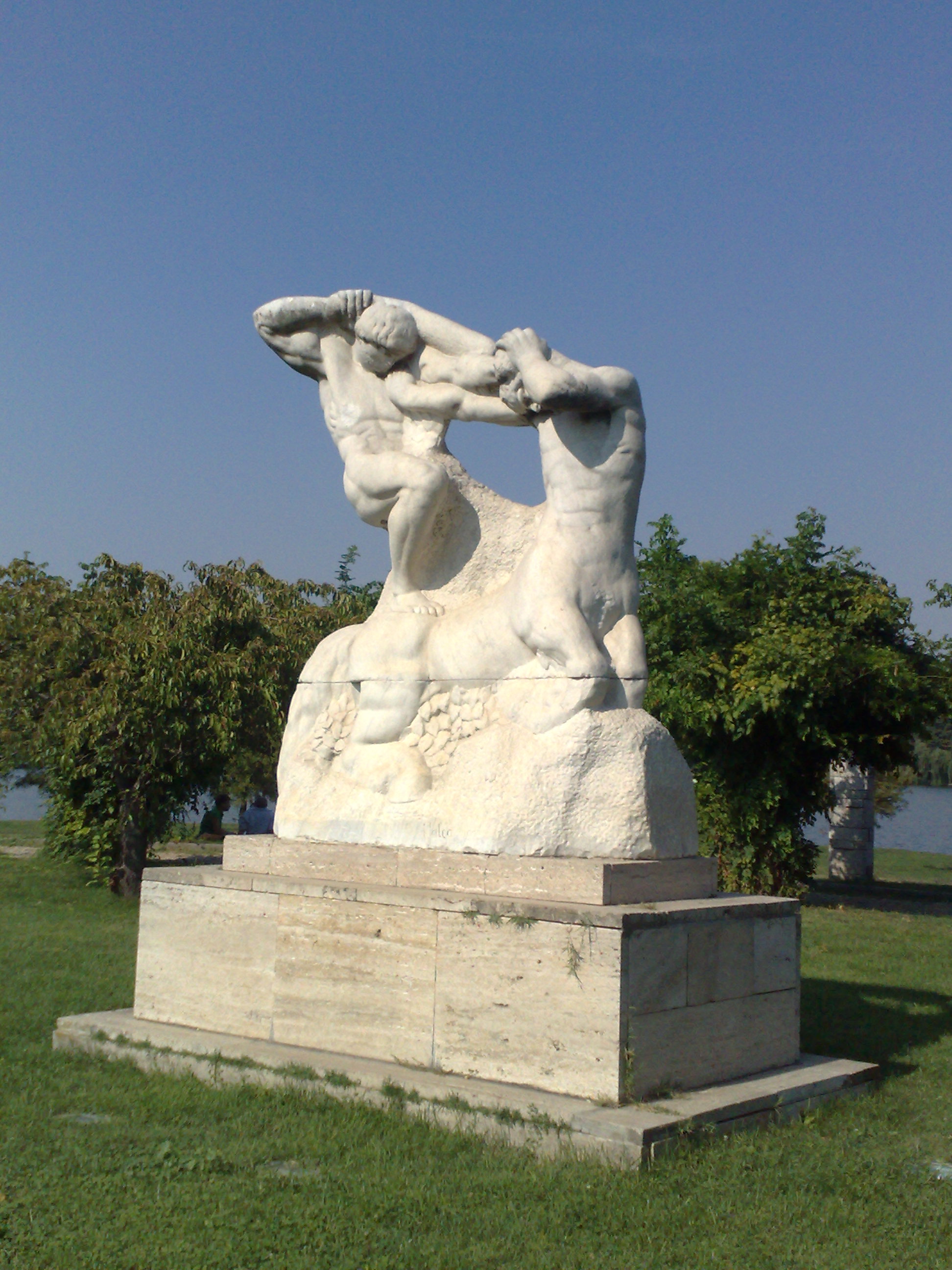|
Piața Universității
University Square () is located in downtown Bucharest, near the University of Bucharest. It is served by Universitate metro station. Four statues can be found in the University Square, in front of the university; they depict Ion Heliade Rădulescu (1879), Michael the Brave (1874), Gheorghe Lazăr (1889) and Spiru Haret (1932). The Ion Luca Caragiale Bucharest National Theatre and the Intercontinental Hotel (one of the tallest buildings in Bucharest) are also located near University Square. University Square marks the northeastern boundary of the Old Center of Bucharest. Since the end of 2014, after a project costing up to 65 million euros, the National Theatre has a new face, dominated by futuristic elements. History In the 15th century, here was the northern limit of the city. Around 1700, the limit was already around what is today Piața Romană (Roman Square). Thought to define the axes north–south and east–west of the city after 1880, "the great crossroad" ... [...More Info...] [...Related Items...] OR: [Wikipedia] [Google] [Baidu] |
Bucharest (8273345834)
Bucharest ( , ; ro, București ) is the capital and largest city of Romania. It is described as the cultural, financial, entertainment, and media center in Romania with a significant influence in Eastern and South-Eastern Europe. It is also an influence in education, tourism, research, technology, health care, art, fashion, sports, and politics in Romania. It is located in the southeast of the country, on the banks of the Dâmbovița River, less than north of the Danube River and the Bulgarian border. It is also one of the most populated cities of the European Union (EU) within city limits and the most populated capital in South-Eastern Europe. It was the capital of Wallachia from 1659 to 1859 and the capital of the United Principalities of Moldavia and Wallachia from 1859 to 1881. Bucharest was first mentioned in documents in 1459. The city became the capital of Romania in 1862 and is the centre of Romanian media, culture, and art. Its architecture is a mix of historical ( ... [...More Info...] [...Related Items...] OR: [Wikipedia] [Google] [Baidu] |
Alexandru Orăscu
Alexandru Hristea Orăscu (30 July 1817 – 16 December 1894) was a Romanian architect famous for his Neoclassicist and Renaissance-revival works. He was born in Bucharest in 1817 to serdar Hristea Orăscu and his wife, Elena Orăscu. He graduated from the Saint Sava High School in his native city. Upon recommendation from his mathematics teacher, Petrache Poenaru, Orăscu was hired in 1837 as aide to the chief architect of the city, a job he held until 1841. He then studied architecture in Berlin and Munich, obtaining his architect diploma in 1847. He designed the initial building of the University of Bucharest (1837–1869), the Grand Hôtel du Boulevard in Bucharest (1865–1871), the Metropolitan Cathedral in Iași (1880–1887), the boys' gymnasium in Ploiești (1865–1866), the Carol I Hotel in Constanța (1879), and the Domnița Bălașa Church in Bucharest (1881–1885). Orăscu was the president of the Romanian Architects’ Society, and served as rector of th ... [...More Info...] [...Related Items...] OR: [Wikipedia] [Google] [Baidu] |
Jiu Valley
The Jiu Valley ( ro, Valea Jiului ) is a region in southwestern Transylvania, Romania, in Hunedoara county, situated in a valley of the Jiu River between the Retezat Mountains and the Parâng Mountains. The region was heavily industrialised and the main activity was coal mining, but due to low efficiency, most of the mines were closed down in the years following the collapse of Communism in Romania. For a long time the place was called Romania's biggest coalfield. History Before the 19th century The region was populated since ancient times, being part of Dacia. During the Middle Ages, the inhabitants of the Jiu Valley lived in huts spread along the mountains, and often near the river, and the main activity was shepherding. Until the early 19th century the region remained sparsely populated due to its geographical isolation (being surrounded by mountains). 19th century and early 20th century The development of coal mining started in the Jiu Valley about 160 years ago, around the ... [...More Info...] [...Related Items...] OR: [Wikipedia] [Google] [Baidu] |
Golaniad
The Golaniad ( ro, Golaniada , from the word ''golan'' meaning "hoodlum") was a protest in Romania in the University Square, Bucharest. It was initiated by students and professors at the University of Bucharest. The Golaniad started in April 1990, before the election of 20 May 1990, which was the first election after the Romanian Revolution of December 1989. Their main demand was that former leading members of the Communist Party should be banned from standing in elections. Background Ion Iliescu and the National Salvation Front (FSN) seized power during the 1989 revolution. The FSN organization was meant to act as a temporary government until free elections were to be held. However, on 23 January 1990, despite its earlier claims, it decided to become a party and to run in the elections it would organize. Some of the dissenters and anti-communists who joined the FSN during the revolution (including Doina Cornea) left following this decision. Many of the FSN personalities, inc ... [...More Info...] [...Related Items...] OR: [Wikipedia] [Google] [Baidu] |
Cezar Lăzărescu
Cezar Lăzărescu (October 3, 1923 – November 27, 1986) was a Romanian architect and urban planner. Starting in the years after his graduation in 1952 and until after the 1977 Vrancea earthquake, he conceived a significant number of buildings and city plans in Romania and abroad. Biography His father, Alexandru Lăzărescu, was an Army colonel, often on duty far from Bucharest; he was killed in action in December 1942 at the Battle of Stalingrad. His mother, Sophia Lăzărescu Georgescu, was a housewife. Having attended an art school herself, she also taught him how to draw and paint. 1930–1956 : School years and first works After attending a small public school, where the short illustrated fairy tale books he wrote brought him the admiration of his teachers and classmates, he was admitted to the Gheorghe Lazăr National College, one of the best high schools in Bucharest. Inspired by the exciting environment and the many extracurricular activities, he performed very w ... [...More Info...] [...Related Items...] OR: [Wikipedia] [Google] [Baidu] |
1977 Vrancea Earthquake
The 1977 Vrancea earthquake occurred on 4 March 1977, at 21:22 local time, and was felt throughout the Balkans. It had a magnitude of 7.5, making it the second most powerful earthquake recorded in Romania in the 20th century, after the 10 November 1940 seismic event. The hypocenter was situated in the Vrancea Mountains, the most seismically active part of Romania, at a depth of 85.3 km. The earthquake killed about 1,578 people (1,424 in Bucharest) in Romania, and wounded more than 11,300. Among the victims were actor Toma Caragiu and writers A. E. Bakonsky, Alexandru Ivasiuc and Corneliu M. Popescu. Communist ruler Nicolae Ceaușescu suspended his official visit to Nigeria and declared a state of emergency. About 32,900 buildings were damaged or destroyed. Immediately after the earthquake, 35,000 families were without shelter. The economic losses are believed to have been as high as two billion US dollars though the sum was not confirmed by the authorities at that time. A ... [...More Info...] [...Related Items...] OR: [Wikipedia] [Google] [Baidu] |
Mititei
Mititei () or mici (; both Romanian words meaning "little ones", "small ones") is a dish from the Romanian cuisine, consisting of grilled ground meat rolls in cylindrical shape made from a mixture of beef, lamb with spices, such as garlic, black pepper, thyme, coriander, anise, savory, and sometimes a touch of paprika. Sodium bicarbonate and broth or water are also added to the mixture. It is similar to ćevapi and other ground meat based dishes throughout the Balkans and Middle East. It is often served with french fries, mustard and ''murături'' (pickled vegetables). History A popular story claims that 'mici' or 'mititei' were invented in the late 14th century and they are originated from the Ottoman Empire. Throughout the years, the recipe lost some of the original ingredients, such as caraway seeds and allspice, and began being made with pork, rather than beef and lamb. Sodium bicarbonate, a raising agent, is also commonly added to the modern Romanian recipe, wh ... [...More Info...] [...Related Items...] OR: [Wikipedia] [Google] [Baidu] |
Neoclassical Style
Neoclassical architecture is an architectural style produced by the Neoclassicism, Neoclassical movement that began in the mid-18th century in Italy and France. It became one of the most prominent architectural styles in the Western world. The prevailing styles of architecture in most of Europe for the previous two centuries, Renaissance architecture and Baroque architecture, already represented partial revivals of the Classical architecture of Roman architecture, ancient Rome and (much less) ancient Greek architecture, but the Neoclassical movement aimed to strip away the excesses of Late Baroque and return to a purer and more authentic classical style, adapted to modern purposes. The development of archaeology and published accurate records of surviving classical buildings was crucial in the emergence of Neoclassical architecture. In many countries, there was an initial wave essentially drawing on Roman architecture, followed, from about the start of the 19th century, by a seco ... [...More Info...] [...Related Items...] OR: [Wikipedia] [Google] [Baidu] |
Princely Academy Of Bucharest
The Princely Academy of Bucharest ( Romanian: Academia Domnească din București, el, Αυθεντική Ακαδημία Βουκουρεστίου) was an institution of higher education, active from the end of the 17th century to the beginning of the 19th century. History According to some scholars, the Academy was most likely founded during the reign of Şerban Cantacuzino (1678-1688). Others believe that the initiative belonged to Constantin Brâncoveanu together with his uncle, Constantin Cantacuzino, in 1694, or to Gheorghe Duca (1675). The institution underwent several reorganisations, under Gheorghe Ghica, Constantine Mavrocordatos, Constantin Racoviţă and Alexandru Ipsilanti. The Academy’s language of study was Greek, the universal language of culture in the Eastern Orthodox world. For the most part, the teachers were also Greek. The students of the Academy came from all over the Orthodox world. In 1818 Gheorghe Lazăr began teaching courses in Romanian. In 1 ... [...More Info...] [...Related Items...] OR: [Wikipedia] [Google] [Baidu] |
Ion Jalea
Ion Jalea (; 19 May 1887 – 7 November 1983) was a Romanian sculptor, medallist, titular member of the Romanian Academy. Biography Artistic studies Jalea was born on 19 May 1887 in the little town of Casimcea, Tulcea County. His family moved in 1893 to Ciocârlia de Jos village, from where he went on to the Mircea cel Bătrân High School in Constanța. He then studied at the ''School of Arts and Crafts'' (in Romanian, ''Școala de Arte și Meserii'') and from 1909 at the National University of Arts in Bucharest, where he was the pupil of the renowned Romanian sculptors Frederic Storck and Dimitrie Paciurea. His first personal exhibit occurred in May 1915. Starting in 1916, his artistic education was pursued in Paris at the Académie Julian. At the time, he worked alongside Henri Coandă as apprentice in sculpture in Auguste Rodin's atelier, after which he continued in Antoine Bourdelle's studio. World War I After Romania entered World War I in August 1 ... [...More Info...] [...Related Items...] OR: [Wikipedia] [Google] [Baidu] |
.jpg)






_-_facade_on_Piazza_dei_signori.jpg)
